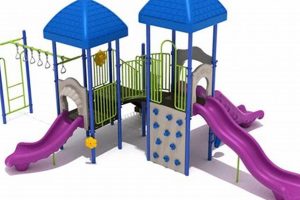Structured learning experiences centered around specific topics, changing each month, provide a framework for elementary education. For example, a school might focus on “kindness” in September, “harvest” in October, and “community helpers” in November. These focused explorations offer opportunities to integrate various subjects, creating cohesive and engaging learning experiences.
Thematic units offer several advantages. They facilitate deeper understanding by connecting different subjects through a common thread, fostering critical thinking and knowledge application. Such an approach can also enhance student engagement and motivation by presenting information in a relevant and exciting context. Historically, thematic learning has evolved from broader, year-long themes to more specific, monthly or even weekly focuses, reflecting a growing understanding of the benefits of concentrated, immersive learning experiences. This approach helps cater to diverse learning styles and allows for flexibility in adapting to student needs and interests.
Further exploration will delve into specific examples of successful thematic units, practical tips for implementation, and resources for educators seeking to enrich their classroom curriculum.
Tips for Implementing Thematic Units
Effective implementation of thematic learning requires careful planning and consideration. The following tips offer guidance for educators seeking to maximize the benefits of this approach.
Tip 1: Align Themes with Curriculum Standards: Ensure chosen topics align with established learning objectives for each grade level. This ensures that while engaging with the theme, students are also mastering essential skills and knowledge.
Tip 2: Incorporate Diverse Learning Styles: Design activities that cater to visual, auditory, and kinesthetic learners. This might include hands-on projects, group discussions, artistic expression, and technology integration.
Tip 3: Utilize a Variety of Resources: Go beyond textbooks and worksheets. Incorporate literature, guest speakers, field trips, and online resources to enrich learning experiences and provide real-world connections.
Tip 4: Encourage Student Choice and Ownership: Offer students opportunities to select projects and activities within the theme. This fosters intrinsic motivation and deeper engagement with the subject matter.
Tip 5: Collaborate with Colleagues: Sharing ideas and resources with other educators can enhance thematic unit development. Cross-curricular collaboration can create more integrated and comprehensive learning experiences.
Tip 6: Regularly Assess Student Learning: Utilize a variety of assessment methods, including observation, projects, presentations, and quizzes, to gauge student understanding and identify areas for improvement.
Tip 7: Communicate with Parents: Keep parents informed about the monthly theme and related activities. This encourages family involvement and extends learning beyond the classroom.
By following these guidelines, educators can create engaging, impactful learning experiences that foster deep understanding and a lifelong love of learning.
In conclusion, the strategic use of thematic units in elementary education offers a powerful approach to enriching curriculum and engaging students. The following section will provide further resources and examples for educators.
1. Curriculum Alignment
Curriculum alignment serves as a cornerstone for effective thematic learning, ensuring that engaging monthly explorations reinforce established learning objectives. Without a clear connection to existing curriculum standards, thematic units risk becoming isolated activities rather than integrated learning experiences. This alignment ensures thematic units contribute meaningfully to student academic progress.
- Standards-Based Focus
Each thematic unit should be explicitly linked to specific grade-level standards. This connection provides a framework for instructional planning and ensures students develop essential skills and knowledge while exploring the chosen theme. For instance, a “Weather” theme in second grade might address science standards related to weather patterns and language arts standards related to informative writing.
- Skill Integration
Thematic units offer opportunities to integrate skills across different subject areas. A theme like “Ancient Civilizations” could incorporate history, geography, reading, writing, and even math concepts. This interdisciplinary approach deepens understanding and allows students to apply skills in various contexts.
- Assessment Alignment
Assessment methods should align with both the theme and the targeted curriculum standards. This ensures accurate measurement of student learning and provides valuable feedback for instructional adjustments. Projects, presentations, and written assignments can be tailored to assess specific skills within the thematic context.
- Flexibility and Adaptability
While curriculum alignment is crucial, it should not stifle creativity or limit exploration. Thematic units can be adapted to meet diverse student needs and learning styles while still adhering to core curriculum objectives. Differentiated instruction and flexible grouping strategies can ensure all students benefit from the thematic approach.
By prioritizing curriculum alignment, educators can ensure that monthly themes enhance, rather than detract from, academic progress. This intentional integration transforms engaging explorations into powerful tools for achieving learning outcomes, fostering a deeper understanding of core concepts and developing essential skills.
2. Engaging Activities
Engaging activities form the core of successful monthly themes in elementary education. These activities translate abstract concepts into tangible experiences, fostering deeper understanding and promoting intrinsic motivation. Effective engagement requires careful consideration of student developmental stages, learning styles, and the specific theme being explored.
- Hands-on Exploration
Hands-on activities provide opportunities for active learning, allowing students to manipulate materials, experiment, and construct their own understanding. Building a model of the solar system during a “Space” theme, or creating dioramas depicting different habitats during a “Biomes” unit, transforms passive recipients of information into active learners.
- Interactive Learning
Interactive learning encourages collaboration and communication, fostering social-emotional growth alongside academic development. Participating in simulations, role-playing scenarios related to historical events, or engaging in debates on current events connected to the monthly theme cultivates critical thinking and communication skills.
- Creative Expression
Creative expression provides outlets for students to personalize their learning and demonstrate understanding in unique ways. Writing and performing plays, composing songs, creating artwork, or producing digital stories related to the monthly theme allows for individual expression and deeper engagement with the subject matter.
- Real-World Connections
Connecting classroom learning to real-world contexts enhances relevance and meaning. Field trips to museums, inviting guest speakers related to the theme, or participating in community service projects bridges the gap between abstract concepts and tangible experiences. This approach fosters a deeper appreciation for the subject matter and its application beyond the classroom.
The strategic implementation of these engaging activities within monthly themes cultivates a dynamic and enriching learning environment. By providing opportunities for active participation, collaboration, creative expression, and real-world connections, educators can foster deeper understanding, ignite curiosity, and promote a lifelong love of learning.
3. Diverse Resources
Diverse resources play a crucial role in enriching monthly themes within elementary education. Utilizing a wide range of materials and learning experiences moves beyond textbook-centric instruction, catering to diverse learning styles and fostering deeper engagement with thematic content. This approach broadens perspectives and provides students with multiple entry points for understanding complex concepts.
Drawing upon a variety of resources allows educators to create more immersive and impactful learning experiences. For example, a “Rainforest” theme might incorporate documentaries showcasing diverse flora and fauna, hands-on activities involving rainforest-themed crafts using recycled materials, guest speakers specializing in rainforest conservation, and virtual field trips exploring different rainforest ecosystems. This multifaceted approach caters to visual, auditory, and kinesthetic learners, fostering a richer understanding of the subject matter than traditional textbook-based instruction could achieve. Furthermore, incorporating diverse perspectives through primary source documents, oral histories, or cultural artifacts provides a more nuanced and authentic learning experience. Examining various perspectives on historical events or exploring cultural traditions through music, art, or storytelling fosters critical thinking and a deeper appreciation for cultural diversity.
The strategic selection and integration of diverse resources is essential for maximizing the effectiveness of monthly themes. Challenges may include access to specific resources, time constraints for incorporating various materials, and the need for professional development to effectively utilize different learning modalities. However, the benefits of fostering deeper understanding, catering to diverse learning styles, and promoting engagement outweigh these challenges. By leveraging a rich tapestry of resources, educators can transform monthly themes into vibrant, impactful learning experiences that cultivate curiosity and inspire a lifelong love of learning.
4. Student Choice
Student choice plays a vital role in the effectiveness of monthly themes within elementary education. Offering opportunities for students to select activities and projects within the thematic framework fosters intrinsic motivation, ownership, and deeper engagement with the subject matter. When students have a voice in their learning journey, they are more likely to invest time and effort, leading to enhanced comprehension and retention. This approach recognizes that learning is not a one-size-fits-all endeavor and allows for personalized learning experiences tailored to individual interests and strengths. For example, within a “Community Helpers” theme, students might choose to research and present on a specific profession, create a diorama depicting a community service scene, or write and illustrate a story about a community helper in action. This choice empowers students to explore aspects of the theme that resonate with them, fostering a sense of ownership and deeper understanding.
Providing choices within thematic units also cultivates essential skills beyond academic content. Decision-making, time management, and project planning are inherent in the process of selecting and executing student-chosen projects. These skills extend beyond the classroom, equipping students with valuable life skills. Furthermore, student choice can create a more inclusive learning environment. By offering diverse options, educators can cater to various learning styles, interests, and abilities. This differentiated approach ensures all students have opportunities to succeed and contribute meaningfully within the thematic framework. A “Healthy Habits” theme might offer choices ranging from creating a healthy recipe book to designing a fitness challenge, allowing students with diverse interests and talents to actively participate.
Integrating student choice within monthly themes requires careful planning and consideration. Educators must provide clear guidelines, accessible resources, and appropriate scaffolding to support student success. While offering choices, maintaining alignment with learning objectives remains crucial. A balance between student autonomy and curriculum requirements ensures meaningful learning outcomes. The challenges of managing diverse student projects and ensuring equitable access to resources must be addressed proactively. However, the benefits of increased engagement, deeper understanding, and skill development make student choice an invaluable component of successful thematic learning experiences in elementary education.
5. Assessment Strategies
Assessment strategies are integral to the successful implementation of monthly themes in elementary education. These strategies provide essential insights into student understanding, informing instructional adjustments and ensuring thematic units effectively contribute to learning outcomes. Effective assessment moves beyond traditional testing methods, incorporating diverse approaches aligned with the multifaceted nature of thematic learning. A comprehensive assessment strategy considers the specific learning objectives embedded within each monthly theme, utilizing a variety of methods to gauge student progress. For example, within a “Life Cycle of a Butterfly” theme, assessment might include observations of student participation in hands-on activities like raising caterpillars, analysis of student-created diagrams illustrating the butterfly life cycle, and evaluation of student presentations showcasing their research on different butterfly species. This multi-faceted approach provides a more holistic view of student learning than relying solely on traditional quizzes or tests.
The selection of appropriate assessment strategies should reflect the diverse learning styles and developmental stages of elementary students. Project-based assessments, where students create presentations, models, or written pieces related to the monthly theme, allow for deeper exploration and demonstration of understanding. Performance-based assessments, such as role-playing or simulations, provide opportunities for students to apply learned concepts in engaging and interactive ways. Portfolio assessments, collecting student work over time, showcase growth and development throughout the thematic unit. Furthermore, incorporating self and peer assessment fosters metacognitive skills and encourages students to take ownership of their learning. Within a “Systems of the Human Body” theme, students might engage in peer assessment of presentations on different organ systems, providing constructive feedback and reflecting on their own learning process. This approach promotes critical thinking and encourages students to view assessment as a tool for growth rather than solely a measure of performance.
Effective assessment within monthly themes requires careful alignment between learning objectives, activities, and assessment methods. Clear communication of assessment criteria and expectations is crucial for student success. Providing timely and constructive feedback empowers students to identify areas for improvement and refine their understanding. Challenges may include time constraints for implementing diverse assessment methods and the need for professional development to effectively design and utilize authentic assessment strategies. However, the benefits of gaining deeper insights into student learning, informing instructional practices, and ensuring thematic units achieve their intended learning outcomes underscore the critical role of assessment in maximizing the effectiveness of monthly themes in elementary education.
Frequently Asked Questions about Monthly Themes in Elementary Education
This section addresses common questions regarding the implementation and benefits of monthly themes in elementary classrooms. The goal is to provide clear and concise information for educators and administrators seeking to enhance their curriculum through thematic learning.
Question 1: How do monthly themes benefit student learning?
Thematic units provide a cohesive framework for connecting various subjects, fostering deeper understanding and engagement. By exploring a central theme through different lenses, students develop critical thinking skills and apply knowledge in meaningful contexts.
Question 2: How are monthly themes aligned with curriculum standards?
Themes are carefully selected to align with existing curriculum standards for each grade level. This ensures that while exploring engaging themes, students simultaneously master required skills and knowledge. Lesson plans and activities are designed to address specific learning objectives within the thematic framework.
Question 3: How can educators ensure thematic units cater to diverse learners?
Differentiated instruction is key. Thematic units incorporate various learning modalities, including hands-on activities, visual aids, auditory resources, and collaborative projects. This approach caters to diverse learning styles and ensures all students have opportunities to succeed.
Question 4: What resources are necessary for effective thematic instruction?
Effective thematic instruction utilizes a variety of resources beyond textbooks. These may include literature, technology, guest speakers, field trips, and online resources. Access to diverse resources enriches learning experiences and provides real-world connections.
Question 5: How can educators assess student learning within thematic units?
Assessment strategies within thematic units are diverse and can include project-based assessments, presentations, portfolios, observations, and traditional assessments like quizzes and tests. The chosen methods align with the specific learning objectives of the thematic unit.
Question 6: How can families be involved in thematic learning?
Regular communication with families about the monthly theme, related activities, and learning objectives encourages at-home extension of classroom learning. Families can participate by engaging in theme-related discussions, supporting student projects, and providing additional resources.
Implementing monthly themes offers significant benefits for elementary students by fostering deeper understanding, enhancing engagement, and catering to diverse learning styles. Careful planning, curriculum alignment, and the utilization of diverse resources and assessment strategies are crucial for successful implementation.
The following section will explore specific examples of successful monthly themes implemented in elementary classrooms.
Conclusion
Exploration of monthly themes in elementary education reveals significant potential for enriching curriculum and enhancing student engagement. Key benefits include strengthened connections between subjects, fostering deeper understanding and promoting knowledge application. Effective implementation requires careful alignment with curriculum standards, utilization of diverse resources, and incorporation of varied assessment strategies. Prioritizing student choice within thematic frameworks empowers learners and cultivates essential skills beyond academic content. Addressing common implementation challenges, such as resource access and assessment design, is crucial for maximizing the effectiveness of this approach.
Thematic learning offers a dynamic and adaptable framework for educators seeking to create vibrant and impactful learning experiences. Continued exploration and refinement of thematic practices will further unlock the potential of this approach to cultivate curiosity, foster a lifelong love of learning, and equip students with the skills necessary to thrive in a complex and ever-evolving world. The future of elementary education hinges on embracing innovative approaches like thematic learning to meet the evolving needs of young learners.







